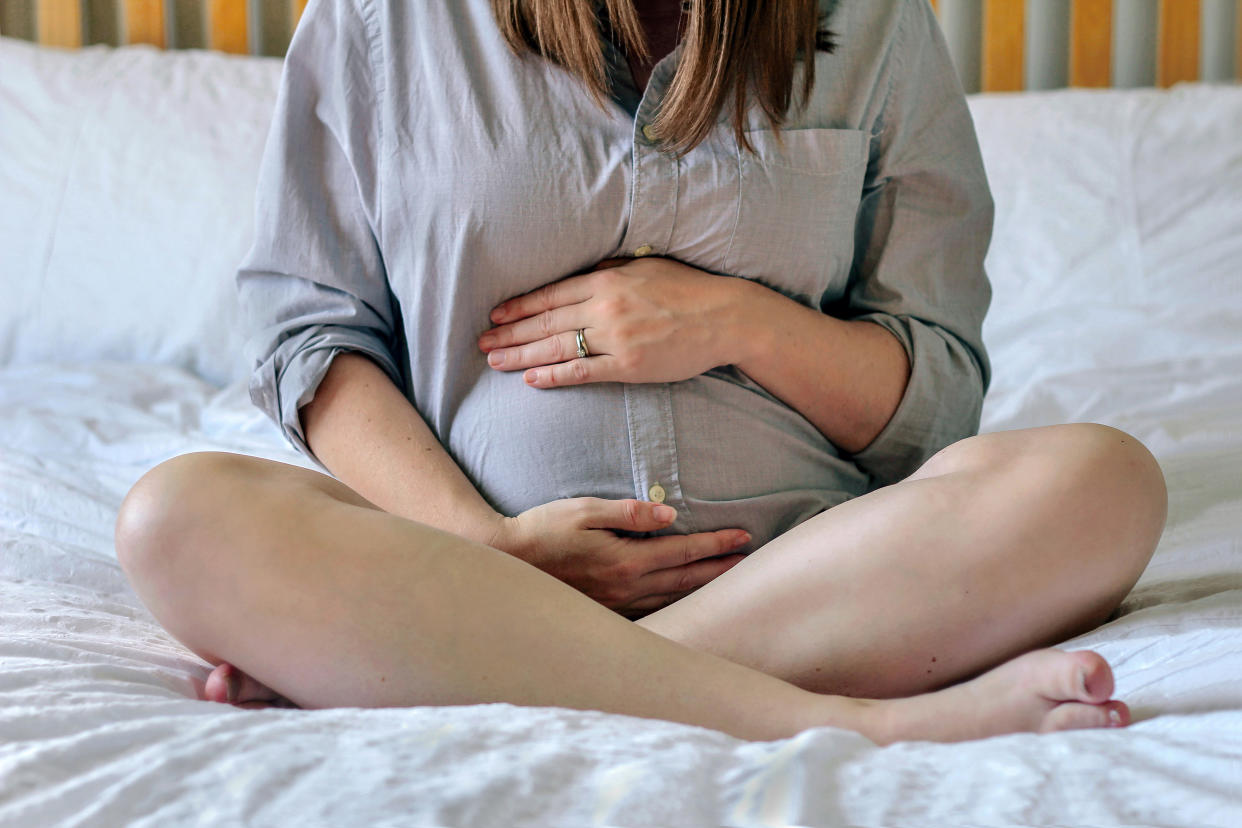Men born to mothers over 35 may be more at risk of heart problems

Men born to mothers over 35 may be more at risk of heart problems, research suggests.
Carrying a baby in your mid-thirties or older is considered a “geriatric pregnancy”, with a higher risk of gestational diabetes, pre-eclampsia and stillbirth.
READ MORE: Risk of stillbirth increases after 41 weeks of pregnancy
To learn more about how pregnancy complications increase with age, scientists from the University of Cambridge looked at rats.
They found changes in the placenta of older rodents limits foetal growth, particularly in male offspring.
With the placenta delivering vital nutrients and oxygen to a developing baby, the scientists worry these changes may trigger heart problems down the line.
“With the average age of first pregnancy in women becoming higher and higher, and especially so in developed countries, it is very important to understand how the age of the mother and the sex of the baby interact to determine pregnancy and later-life health of the child,” lead author Dr Amanda Sferruzzi-Perri said.
Between 14% and 22% of all live births in the UK, US, Canada and Australia are in women aged 35 or over, the scientists wrote in the journal Scientific Reports.
And around 5% of those in England and Wales were in women aged 40-to-44 in 2016, according to the Office of National Statistics.
READ MORE: Couple describe heartbreak of losing 12 babies in three years
To learn more, the scientists looked at pregnant rats aged between 9.5 and 10 months. This is equivalent to around 35 years old in humans, they added.
Rats are a “useful model” due to their “biology and physiology having a number of important characteristics in common with humans”, the scientists wrote.
Compared to rodents of the more “normal” reproductive age of three-to-four months, the older animals had reduced “efficiency” of the placenta for both the male and female foetuses.
The structure and function of the placenta was most markedly altered in the male foetuses, the results show.
Efficiency was measured by the presence of certain hormones and proteins, as well as the expression of genes, cell health and so-called “internal” stress.
The placenta changes for the male foetuses were reportedly sufficient to limit their growth.
This was different to the female foetuses, where the older rats’ placentas even supported the offspring better than that of a younger rodent in some cases. It is unclear why this occurred.
As well as providing a baby with nutrients, the placenta also releases signals that support foetal development and acts as a barrier against toxins.
The dynamic organ can change its function in response to low nutrient levels or even maternal stress.
READ MORE: Model who didn't realise she was pregnant gives birth on bathroom floor
“A pregnancy at an older age is a costly proposition for the mother, whose body has to decide how nutrients are shared with the foetus,” Dr Napso said.
“That's why, overall, foetuses do not grow sufficiently during pregnancy when the mother is older compared to when she is young.
“We now know growth, as well as gene expression in the placenta, is affected in older mothers in a manner that partially depends on sex.
“Changes in the placentas of male foetuses are generally detrimental.”
This comes after past research by the same scientists suggests the children of older mothers have worse “heart function” and blood pressure as young adults, particularly among men.
The team hope their study will encourage doctors to consider the sex of an older pregnant woman’s baby when they give out advice.
With further research, they aim to find ways to improve the function of the placenta to optimise foetal growth.


